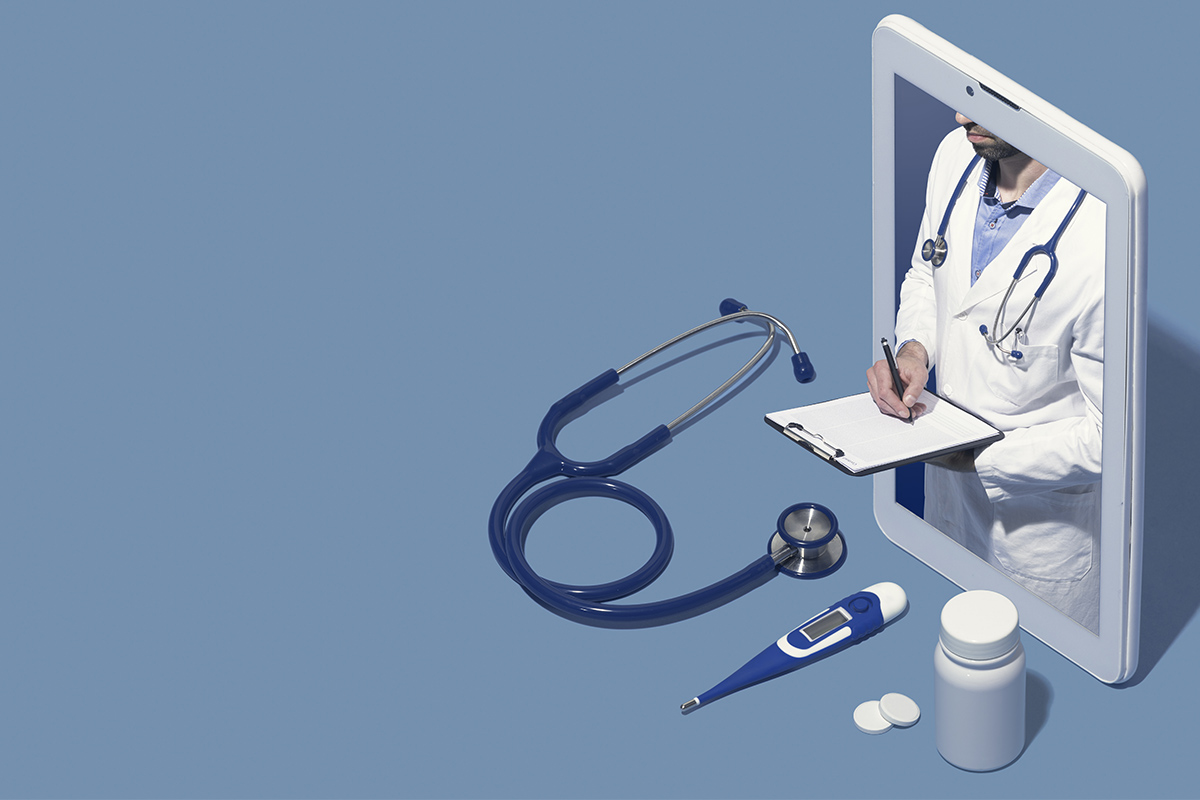Telehealth is the delivery of healthcare services where patients and providers are divided by distance. Telehealth uses Information and Communication Technology for sharing of information for the diagnosis and treatment of diseases. Telehealth has the ability to outreach the patient for quality and cost-effective health services. It is very much helpful for those in remote areas, vulnerable groups, and the aging population.
Before the Covid-19 pandemic, there was little interest in the use of telehealth services by the healthcare personals and patients. However, the pandemic has increased adoption to access telehealth services as a way to deliver acute, chronic, primary, and specialty care. Telehealth has also improved patient health outcomes.
Means of Telehealth
Synchronous – It is a live audio-video interaction of a patient with a doctor using a smartphone, tablet, or computer.
Asynchronous – This is not a live interaction, here messages, pictures, or data are collected at any time and interpreted or responded later. There are several patient portals that enable communication between provider and patient through secure messaging.
Remote Patient Monitoring – It refers to the direct transmission of a patient’s medical report from a distance to their healthcare provider.
Benefits of Telehealth
These services are a safer option for healthcare providers and patients by reducing potential infectious exposures in this pandemic.
Maintaining the continuity of ongoing treatment from delayed preventive or routine care.
It is good for medically or socially vulnerable patients to have remote access to healthcare providers.
It also helps in preserving the patient–provider relationship.
Provide low-risk urgent care for non covid patients. Access to primary care providers and specialists for chronic health conditions.
Provide coaching and support for patients managing chronic health conditions including counseling. Participate in physical therapy, occupational therapy for optimal health.
Monitor clinical signs of certain chronic medical conditions such as blood pressure, glucose, etc.
Follow up for patients after hospitalization. Useful for patients who have difficulty in accessing care.
Allows advance care planning and counseling to patients and caregivers for a life-threatening event.
Providing education and training for healthcare providers through professional medical consultations.
Despite the potential of telehealth services to enrich the quality and accessibility of healthcare, the victory percentage of such services has been a little disappointing.
Boundaries of Telehealth
Challenge with respect to license and other regulatory issues that vary from state to state.
Situations where adequate physical examination has to be performed with the physical visit of the patient.
Patient discomfort or privacy concern to talk on a sensitive topic.
Insufficient access to devices such as smartphones, tablet,s or laptops needed for telehealth service.
Comfort level with technology for patient and healthcare provider.

 “Telehealth has become a useful aspect for the healthcare system in providing medical services to the patients in the form of virtual care during and beyond the Covid-19 pandemic. It has increased the quality and accessibility of healthcare.â€
“Telehealth has become a useful aspect for the healthcare system in providing medical services to the patients in the form of virtual care during and beyond the Covid-19 pandemic. It has increased the quality and accessibility of healthcare.â€





.jpeg)
.jpeg)

.jpeg)
.jpeg)
.jpeg)
.jpeg)
.jpeg)
.jpeg)






.jpeg)

.jpeg)
.jpeg)







.jpg)

